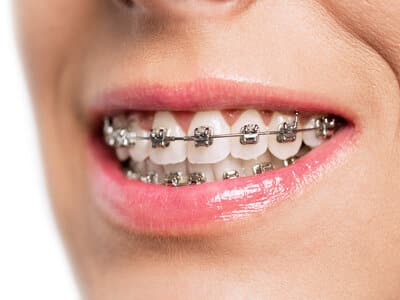
Blog
Maintaining Oral Health During Pregnancy: What You Need to Know

How Orthodontics Can Improve Your Child’s Speech

Orthodontics can play a significant role in improving a child’s speech by correcting malocclusions that affect speech patterns. Malocclusions, such as overbites, underbites, and crossbites, can cause speech issues by impacting the tongue’s placement and regulating airflow during speech.
Fortunately, orthodontic treatment can correct these malocclusions and improve speech by altering the anatomy of the mouth. By adjusting the position of the teeth and jaws, orthodontics can help the tongue connect with the alveolar ridge correctly and regulate airflow during speech, resulting in clearer speech sounds.
Orthodontic treatment can also work alongside a speech pathologist or other healthcare professionals to create a comprehensive plan to improve speech. However, it is important to note that orthodontic treatment may not always be the sole solution for speech problems. In some cases, jaw or orofacial surgery may be required to correct severe speech impairments.
If your child is experiencing speech difficulties, it may be beneficial to consider orthodontic treatment. An orthodontist can evaluate your child’s mouth’s anatomy and determine if orthodontics can improve speech. Early intervention is key, and by addressing malocclusions at an early age, you can help your child develop clear and effective communication skills.
Contact our office to schedule an appointment and learn how orthodontics can benefit your child’s speech development.
How Orthodontics Can Help with Breathing and Sleep Disorders

Asthma is a common respiratory disorder that affects millions of people worldwide. It can lead to a host of negative symptoms in the mouth, including decreased saliva production and higher rates of malocclusion. Asthma sufferers are also more likely to experience tooth decay and cavities due to the dry mouth associated with the condition. If you have asthma, it’s important to inform your orthodontist so that they can adjust your treatment plan accordingly.
Sleep apnea is another disorder that can benefit from orthodontic treatment. While it’s not caused by orthodontic issues, studies have shown that orthodontists are well-equipped to screen for the condition. In a routine orthodontic exam, your orthodontist can quickly identify signs of sleep apnea and refer you to a specialist for treatment. In some cases, tooth movement may be recommended as part of the treatment plan for sleep apnea.
In addition to treating asthma and sleep apnea, orthodontic treatment can also improve the overall appearance of your face. By adjusting the position of your teeth and jaw, your orthodontist can create a more balanced facial profile and improve your breathing and speech.
Overall, orthodontic treatment is a valuable tool for addressing a wide range of issues beyond just the appearance of your teeth. If you suffer from breathing or sleep disorders, consider speaking with your orthodontist to see how they can help.
Exploring the Jaw, Tooth, and Orthodontic Treatment

In This Post We’ll Cover:
- The Jaw
- The Tooth
- Orthodontic Movement
Preventing White Spots on Teeth During Braces Treatment

In this post, we will explore:
- Understanding White Spot Lesions (WSLs) with Braces
- Professional Teeth Whitening Options
- At-Home Whitening Solutions